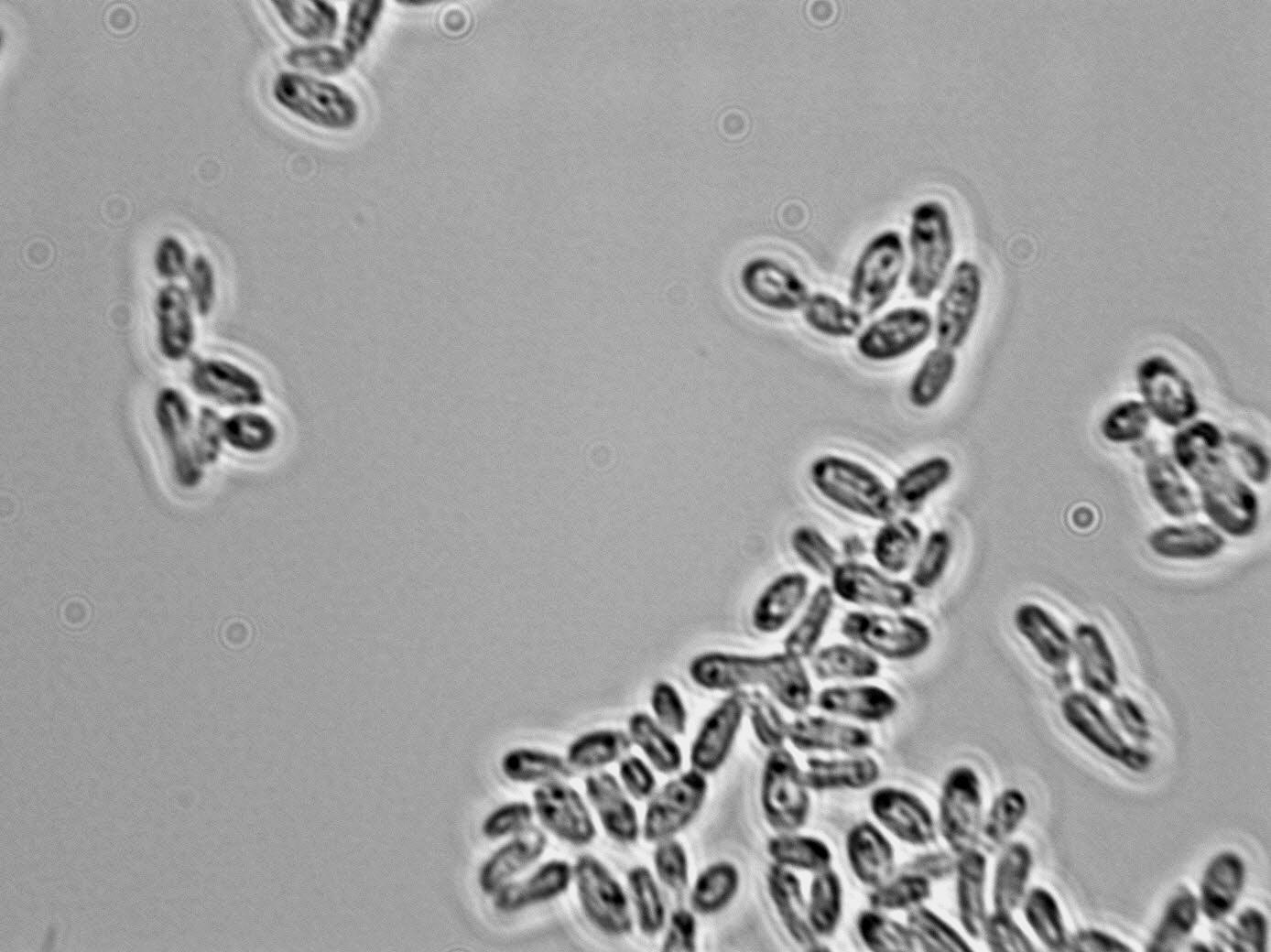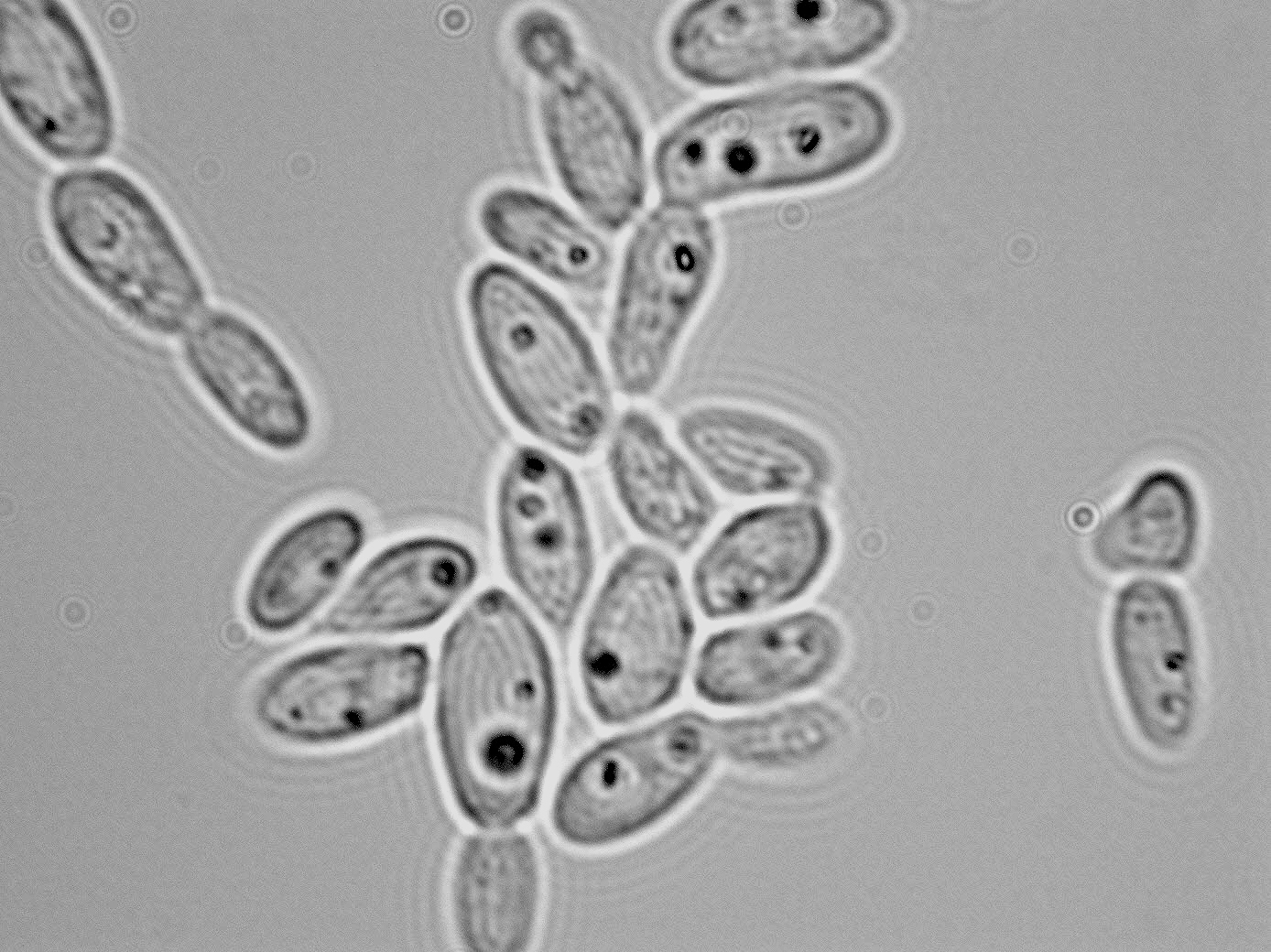Genus/species (aliases): Candida vini (Mycoderma vini; Mycokluyveria vini; Saccharomyces mtcoderma; Candida mycoderma; Mycoderma cerevisiae; Azymocandida mycoderma)
Classification: Ascomycete; anamorph
Morphology:
Cell: reproduces by budding, cells ovoid to cylindrical, singly, in pairs, small groups, or chains; simple to elaborate branched pseudohypahe may be formed
Colony:
- YPD: cream-colored, soft, butyrous, smooth and glossy with a lobed ;margin
- Corn Meal agar: Pseudohyphae; branched chain of elongated cells with blastoconidia.
- Spore: no sexual spores; blastospores formed; Teleomorph Pichia fluxuum forms hat-shaped ascospores
- Zygote: NA
- Ascus: NA
Liquid Growth: form a pellicle; a sediment may be formed
 |
 |
 |
 |
Physiological Traits:
- Fermentation: Glucose variable
- Assimilation: Ethanol ; D-Mannitol ; D-Glucitol; variable: Glycerol, Ribitol, Lactate, Succinate ; no assimilation of nitrate; no growth in vitamin free medium requiers: biotin; sole N source: cadaverine, L-lysine, ethylamine.
- Products: DL-(+)-lactate
- Growth: 37 C: -
- Growth sensitivities: no growth on cycloheximide or 10% NaCl; will grow in 1% acetic acid
Ecological Traits:
- Found on fruit and vegetable surfaces; has been isolated from turbid wines
- Distinguishing Features:
- Formation of pseudohyphae and blastoconidia on corn meal agar. Ability to assimilate cadaverine.
Role in wine: Spoilage yeast, which makes wines sour and/or cloudy.
Sensitivities:
- SO2: 50ppm
- Sorbate: unknown
- DMDC: unknown
- pH: >8, <3 li="">
- Acids: unknown
- Ethanol:10%
- Anaerobiosis: requires O2 for initial growth
- Heat: unknown
